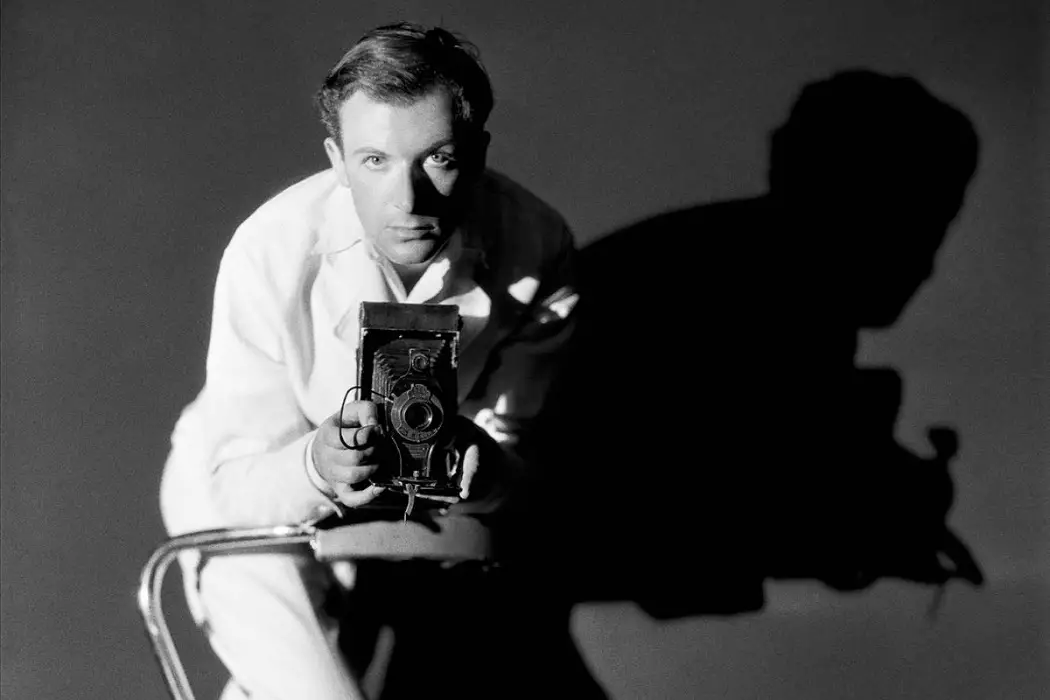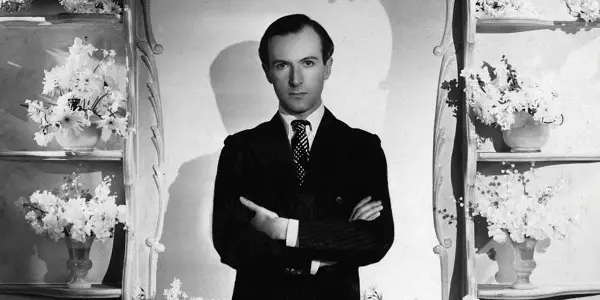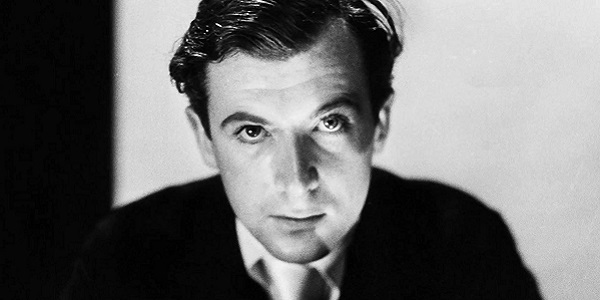LOVE, CECIL: A Worthy Portrait Of A Life Devoted To Beauty

Lee Jutton has directed short films starring a killer toaster,…
Those of you who watch The Crown are probably familiar with Cecil Beaton as the longtime royal photographer favored by the Queen Mother, whose style the rebellious Princess Margaret rejects in favor of a more provocative birthday portrait taken by her lover. Margaret claims that Beaton’s portraits are too frothy and frilly for her taste; the Queen Mother, on the other hand, praises Beaton’s work as helping bring the fantasy of royal glamour to life for regular people.
Yet to think of Cecil Beaton merely as someone who took portraits worthy of a princess does a great disservice to a man whose talents extended beyond photography to painting, writing, and even costume design – his unusual and not entirely historically accurate spin on Edwardian fashion made My Fair Lady iconic and won him an Oscar. What united Beaton’s work across these various mediums was his unabashed pursuit of beauty, and his desire to present a world more beautiful in fantasy than it was in actuality.
A devoted diary keeper whose entries exposed what he really thought of the high-society figures he kept company with, Beaton’s own words – as spoken by Rupert Everett – bring the infamous aesthete back to life in filmmaker Lisa Immordino Vreeland’s new documentary Love, Cecil. From his time at Cambridge, where he resolutely avoided attending a single lecture in favor of presenting theatrical productions, to his rumored affair with the notoriously private Greta Garbo, to his being knighted for services to the British empire, Vreeland shows us how one man’s unique way of portraying the twentieth century became the way that so many of us now remember it.
The Beautiful and the Damned
Through both archival interview footage and Everett’s narration, we learn that Beaton had a hard time deciding what he was meant to do in life, especially after he left Cambridge without earning a degree. One thing he knew, he did want was to break into high-society circles – after all, in order to make a living as an artist, one needed a wealthy and powerful patron. Beaton used his gifts for photography and shameless self-promotion to ingratiate himself into the group of bohemian socialites known as the Bright Young Things.

By documenting the madcap adventures of this hyper-privileged set, Beaton was able to share their spotlight and secure numerous high-profile gigs as a portrait photographer. His subjects ranged from Queen Elizabeth to Mick Jagger, from David Hockney to Marlene Dietrich, from Marilyn Monroe to his own mother. Many of these portraits are presented in Love, Cecil; their breadth of subject and style make Beaton’s photographs an effective slideshow of the twentieth century.
Over the years, Beaton became particularly renowned for his fashion photography (for Vogue), war photography (for the UK Ministry of Information), and stage design (for the musicals Gigi and My Fair Lady). His career began in the Edwardian era and managed to not only to survive the decades that followed but to evolve and thrive with the changing times. All the while, he documented everything – including his often-tumultuous social life – through detailed diary entries and overflowing scrapbooks.
Through these personal musings, drawn heavily upon by Vreeland, we learn how Greta Garbo temporarily cut him out of her life after an agreement to only publish one portrait of the actress in Vogue was broken by Beaton. We hear Beaton’s incredibly vicious takes on prominent figures such as Evelyn Waugh and Katharine Hepburn. We learn of his numerous affairs with both men and women at a time when homosexuality was illegal in England and see how the necessity to keep a part of oneself hidden may have been at the root of Beaton’s apparently unquenchable loneliness.

In addition to Beaton’s artistic work and diaries, Vreeland also litters Love, Cecil with numerous interviews with Beaton’s contemporaries, as well as artists and designers, who have been greatly influenced by his work. We get enough catty gossip to question how anyone famous could ever trust Beaton – then we see more of his singularly creative work, and we understand. By leaning heavily on Beaton’s own exceptional imagery, Vreeland’s film bears an extraordinary resemblance to the collages that Beaton spent so much time making for himself. Even if you find it hard to like the man, it’s impossible to come away from Love, Cecil and not be inspired by his many artistic creations – not to mention, his never-ending drive to create more.
Conclusion: Love, Cecil
Beaton’s personal life may not always have been pretty, and his attitude was often prickly, but his work was always, undeniably beautiful. By showing him the respect he deserves, while also not shying away from the less pleasant sides of his personality, Love, Cecil is a perfect tribute to all of the contrasting sides of this multifaceted, multi-talented artist.
What do you think? Does Cecil Beaton’s life sound like ideal documentary fodder to you? Share your thoughts in the comments below.
Love, Cecil was released in theaters in the U.S. on June 29, 2018. For all international release dates, see here.
Does content like this matter to you?
Become a Member and support film journalism. Unlock access to all of Film Inquiry`s great articles. Join a community of like-minded readers who are passionate about cinema - get access to our private members Network, give back to independent filmmakers, and more.
Lee Jutton has directed short films starring a killer toaster, a killer Christmas tree, and a not-killer leopard. Her writing has appeared in publications such as Film School Rejects, Bitch: A Feminist Response to Pop Culture, Bitch Flicks, TV Fanatic, and Just Press Play. When not watching, making, or writing about films, she can usually be found on Twitter obsessing over soccer, BTS, and her cat.













